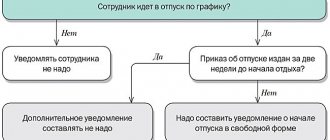The concept of a shift schedule
Shift work, 2/2 shift schedule - this, as many employers claim, is a very common mode. You need to work in two, three, four shifts, which are introduced if the duration of production processes is higher than permissible during daily work, as well as for the most efficient use of equipment and increasing production volumes. With the help of this mode, the uninterrupted operation of the organization is ensured. As a rule, to ensure this format, you need to organize 3 teams, sometimes 4.
Now that you know what a 2/2 work schedule is, let’s look at its features in more detail. The days of operation in this mode during the week will also differ from usual. When establishing a shift format in an organization, the employer must form several teams. They work in turns, which makes it possible to ensure a smooth process. If the institution is small, employees can work one at a time, replacing each other. This is possible in areas with simple processes. Answering the question: what is a 2-by-2 schedule? The main thing is to not allow an employee to work more than one shift in a row.
A two-by-two work schedule is one of the possible options for shift work. This algorithm is the most popular in practical activities.
A special feature of the regime is that the length of the working day goes beyond the 8 hours required for a five-day week. You must be present at the workplace both on weekdays and weekends. If an employee working in shift mode falls on a holiday, the work will be paid in a single amount. A duty period of 10 or 12 hours is not considered overtime, and no additional payments are established. All of these provisions are provided for within the framework of the employment agreement.
The legislative framework
The format of work in the 2-by-2 mode - what is the work schedule, what are its features established by the legislator? Labor Code of the Russian Federation in Art. 103 allows for the installation of a shift regime if the process in the institution is to provide round-the-clock services. The head of the enterprise creates and regulates schedules. It is important to remember the prohibition on exceeding labor standards: during the week, an employee works the same as the standard working week of 40 hours (but in general, more is possible, you need to look at the accounting period, usually with this mode, summarized accounting of working hours).
Work activities in shift mode (this is a variant of what schedule 2/2 is called) include the following articles of the Labor Code of the Russian Federation:
- Art. 102 - work in a flexible format;
- Art. 103 - shift schedule;
- Art. 104 — accounting of labor time;
- Art. 105 - permitted methods of redistributing labor time.
Production calendar 2021
Thus, the duration of the “New Year's holiday” will be 8 days - from January 1 to January 8, 2021. In May 2021, the rest period coinciding with the celebration of the Spring and Labor Day will have 5 non-working days - from May 1 to May 5, and on coinciding with the celebration of Victory Day - 3 days - from May 9 to 11.
Second quarter
The standard working time for the year as a whole is calculated in a similar manner: the length of the working week (40, 39, 36, 30, 24, etc. hours) is divided by 5, multiplied by the number of working days according to the calendar of a five-day working week per year and from the amount received is subtracted by the number of hours in a given year by which working time is reduced on the eve of non-working holidays (clause 1 of the Procedure).
We have collected information about all official holidays and transfers of days off in the coming year and remind you of the rules for calculating working hours for a week, month and year. At the end of the article you will find a production calendar that you can download or print.
Who works on a shift schedule
Shift mode - as the 2-by-2 work schedule is called, is used in institutions where you need to work around the clock. As a rule, these can be:
- emergency response services (EMERCOM, police, doctors), because their work is needed at any moment;
- non-stop cycle enterprises;
- institutions serving the population (hotels, cafes, security companies);
- transport companies (including train stations, airports);
- trading enterprises (if they provide services to the public 24/7).
The list is far from exhaustive; however, an organization can switch to shift mode at any time if the need arises.
Which organizations work in shifts?
Here are some examples:
- emergency services (fire, police, ambulance, emergency services);
- uninterrupted cycle enterprises (boiler house, oil refining, power supply);
- public service enterprises (security, hotels);
- organization of transport services (stations, airports);
- 24-hour retail outlets;
- other organizations that, due to the nature of their activities, are forced to work around the clock.
Features of shift work
Features of labor processes influence the established regime. However, in any case, it must be carried out in compliance with the conditions established by current legislation.
The schedule can be entered in relation to different time periods. Using summarized accounting, the employer establishes an accounting period.
The replacement format is introduced for a specified period or on an ongoing basis. The main thing is to determine the employee’s working time, which is not higher than the established duration for such a category. This means that neither overtime nor overtime is included in the plan (they are entered in the time sheet). It is important to consider that adequate rest must be provided during a 12-hour shift.
It is imperative to follow the provisions of Art. 94 of the Labor Code of the Russian Federation and take into account the employee’s membership in those groups for which a special work shift duration is determined, including a reduced duration.
The duration of the shift varies, depending on the needs of the organization. However, days off must be provided exactly according to the work plan. Working under shift conditions does not deprive the right to annual leave and paid sick leave.
The Labor Code of the Russian Federation does not establish the duration of the period for which a shift regime is drawn up. As a rule, this is one month, but the shift can last for a year.
Opening hours
The legislator requires that the work schedule during the day be distributed between at least 2 shifts of workers. The duration of one shift is no more than 12 hours.
The employer can choose the most optimal option for production:
- two shifts - the production process is divided into two components: day and night;
- four teams - employees work in the format: night shift, day shift, weekend;
- 72 hours - employees work in the following format: 2 shifts a day, 2 days off, 2 shifts in the evening, 1 day off, 2 shifts at night, 3 days off.
Night shift
As a rule, the working day begins at 8 am or, accordingly, in the evening. An employee does not have the right to voluntarily change the schedule without agreeing with the employer. You can only work on your own shift.
The employer must monitor the uniform rotation of teams: each team works in turns on night and day shifts.
Labor organization algorithms may be different. So, an employee can work during the day, then in the evening or immediately at night. A format of 2 days during the day, 2 days at night is possible.
Is it legal to work every other day or two?
This article explains in detail what to do if you work within two days, is it legal, and everything you need to know about it.
Each person is unique in his own way, there are larks and owls who wake up at the opposite time to each other, and ferrets and pigeons who either constantly want to sleep or stay awake most of their lives, leaving 3-4 hours for sleep and using Uberman's special system for sleep - phases. For such people, they have come up with different schedules, which are specified in the Labor Code of the Russian Federation. Types of working hours for workers in the Russian Federation for 2021:
- Standard 5\2, 8 hours every day, excluding weekends (Saturday, Sunday). Usually the working day begins at 9 or 10 am, respectively, ends at 6 or 5 pm, leaving the dark time of the day free for entertainment.
- 2\2 – the work schedule here is shifted, and the weekend is not Saturday-Sunday, but any two days of the week after 2 days of work. During this schedule, work hours increase from 8-9 to 11-12, making work a little more difficult, but reducing the wait for weekends. This system is not the main one, it is not very convenient for people with families, because often the spouses’ schedules do not coincide.
- Flexible schedule. Here the system is divided into 3 more types according to working hours: a person works the hours that he should have worked in a day; completes hours that should have been completed weeks ago; rents out watches for a month of full-time work. Typically, a flexible schedule is based on the Standard System norm (5\2) and is perfect for night owls who can work, for example, at night and get a good night's sleep in the morning.
- Part-time employment. This schedule assumes that a person will work half as much as under the Standard schedule (5\2): either it will be reduced days per week (3 days a week for 8 hours), or it will be a shortened day (5\2, but for 3-4 hours). Young mothers often start working part-time after maternity leave or during maternity leave.
- 1\2 – one by two. On the territory of the Russian Federation, this schedule is not entirely regulated by the Labor Code, however, it exists in some types of activities. Let's talk about this.
Work schedule every other day and its legality
According to the Labor Code of the Russian Federation, Part 2, Art. 91 The maximum number of hours a person can work in a week is 40 hours. This figure is obtained from the Standard Schedule (5*8=40 hours). In the absence of a clear system that deviates from the Standard schedule, a system of cumulative hours was created (i.e., an employee does not have to work 8 hours without a break, not including a lunch break), and according to this system there is a rule in which shortfalls for the previous period can be compensated by processing during this period. When drawing up a work schedule of 2 days, a worker often works 16-17 hours a day. According to the labor code, it is allowed to work only 12 hours at a time. Therefore, with this schedule, the employer enters into an agreement with the worker on the terms of 1.4 times the wage per week. That is, 56 hours a week. This is also called a “part-time agreement.”
But even under such conditions, the schedule for two days at a time will still exceed the norm under the labor code. The employer can reduce the hours by passing off the remaining hours as overtime. However, this scheme will not help either, because according to the labor code, overtime should not exceed 4 hours in two days or 120 hours per year. After calculating overtime for each day (12 hours + 4-5 hours for each day of work), it turns out that even through the total counting system using overtime, the two-day schedule is not included in the legally established rules of the labor code.
In practice, it often happens that two days later are assigned due to an urgent circumstance of one of the employees (going on sick leave or taking a vacation). Then the employer can assign a 1/2 schedule, defined for a specific period, for example, a week or 2. If the employee does not agree to such working conditions, he has the right to sue his employer for the protection of labor rights, Art. 379 Labor Code of the Russian Federation. If a sudden change in work schedule is refused, the employee retains and protects all his rights. Through the labor court, the employer, in case of violation of the labor rights of employees, receives a disciplinary fine and may be subject to administrative liability. According to the law, if an employee refuses to work according to the new schedule, management does not have the right to discipline employees, much less fire them. If the labor code is violated due to the above-mentioned actions, management will be subject to disciplinary and administrative liability. However, after the worker is restored to his rights, of course, the attitude towards him in the work collective will change and the person will still have to quit, because the labor code does not take into account the rights of the worker under moral pressure from management or the team.
When starting a new job, carefully monitor your work schedule. If it does not comply, contact the court for the protection of labor rights.
Features of working at night
A night shift is one the main part of which occurs at night (from 22:00 to 06:00) or evening (for example, from 20-00 to 08-00). Night duty should be an hour shorter than day duty. This does not apply to those hired to work exclusively at night.
It is prohibited to work on the night shift:
- under 18 years of age;
- pregnant women.
Women with children under 3 years of age, disabled people, single parents, and those caring for the sick can work at night (only with written consent).
Labor Code of the Russian Federation in Art. 154 determines the mandatory use of increased coefficients in relation to hours worked by an employee at night. The minimum amount is 20%. The maximum amount of additional payment and its determination is the right of the manager.
In general, Decree of the Government of the Russian Federation dated July 22, 2008 No. 554 establishes the same minimum amount of extra pay for night work for all employees, or rather a 20 percent extra pay for each working hour.
The specific amount of the increase in payment for going out at night is established:
- collective or labor agreement;
- local regulations.
The additional payment is calculated from the hourly tariff rate (salary per hour of work), that is, when establishing an additional payment for work at night, other additional payments and (or) allowances should not be taken into account.
Working time standards: production calendar for 2021
- New Year holidays and Christmas - from January 1 to January 8;
- Defender of the Fatherland Day - February 23;
- International Women's Day - March 8;
- Spring and Labor Holiday and Victory Day - May 1 and 9;
- Russia Day - June 12;
- National Unity Day - November 4.
We recommend reading: Rules for Passing the Medical Examination for Employees of an Educational Institution
Holidays: work and rest
- from 1 (Wednesday) to 8 January (Wednesday);
- from 22 (Saturday) to 24 February (Monday);
- from 7 (Saturday) to 9 March (Monday);
- from 1 (Friday) to 5 May (Tuesday);
- from 9 (Saturday) to May 11 (Monday);
- June 12 (Friday);
- November 4 (Wednesday).
In the current practice of paying for work at night, in many industries industry agreements are used, which establish a surcharge coefficient of 40% (federal industry agreement on the road sector, mechanical engineering complex, etc.).
To calculate the standard working time per month, the following method is used: the length of the working week (40 hours) must be divided by 5, multiplied by the number of working days in the month and subtracted the number of hours by which pre-holiday days were reduced (if they exist in a particular month) .
Payment for night hours during a shift work schedule: legal norms, nuances
Salaries for work performed between 10 p.m. and 6 p.m. are paid at an increased rate (Article 154 of the Labor Code of the Russian Federation). The legislator establishes the following norm: an hour of working time at night should cost more than an hour of work under normal daytime conditions. The minimum coefficient of increase in pay is established by the Government of the Russian Federation based on the recommendations of specialists from the Russian Tripartite Commission for the Regulation of Social and Labor Relations.
Only after employees familiarize themselves with the approved version of the schedule for signature will they be obliged to comply with it. Information should be brought to the attention of personnel no later than a month before it comes into force (Article 103 of the Labor Code of the Russian Federation).
How is it paid?
Another logical question: 2/2 work schedule - how is it paid? Work time recording in a shift format is designed for short periods of time, usually a month. Accordingly, payment is calculated according to the number of shifts worked during the accounting period, that is, for the one for which the shift regime is established.
The schedule must be drawn up so that the employee develops a norm taking into account annual vacations.
The average working month in 2021 will be 164.17 hours with a 40-hour week. Overtime activities are subject to additional payment. In case of shortcomings, payment is deducted or paid in proportion to the time worked.
A work shift or part of it that falls according to the schedule on Saturday or Sunday is paid as a regular working day (Article 111 of the Labor Code of the Russian Federation). A shift on a day that falls on a holiday is subject to double payment. Work on a day that is a day off can be compensated by time off; hours of work are paid at a single rate. If the employee does not take time off, payment will be made at double the rate.
Thus, the enterprise has the right to decide whether to choose a shift mode in the 2/2 option or another. The main thing is to comply with working time standards.
What are the postponements of holidays in 2021?
The Labor Code of the Russian Federation prohibits work on weekends and holidays, except for cases expressly provided for by the Code itself (Article 113 of the Labor Code of the Russian Federation). What holiday postponements are planned for 2021? On what days can you not work? Let me explain.
We recommend reading: Balloons What is Kosgu?
Holidays 2021: official holidays with postponements
Other rules apply when the weekend coincides with the New Year holidays and Christmas. In this case, the Government transfers two weekend days from among those that coincide to other days in the current calendar year. That is, no one knows in advance what other non-working days will be added in the coming year. That is why everyone was eagerly awaiting the release of the Resolution establishing the official transfer of days off in 2021.
According to part two of Art. 112 of the Labor Code of the Russian Federation, if a weekend and a non-working holiday coincide, the day off is transferred to the next working day after the holiday, with the exception of weekends coinciding with non-working holidays from January 1 to January 8.









